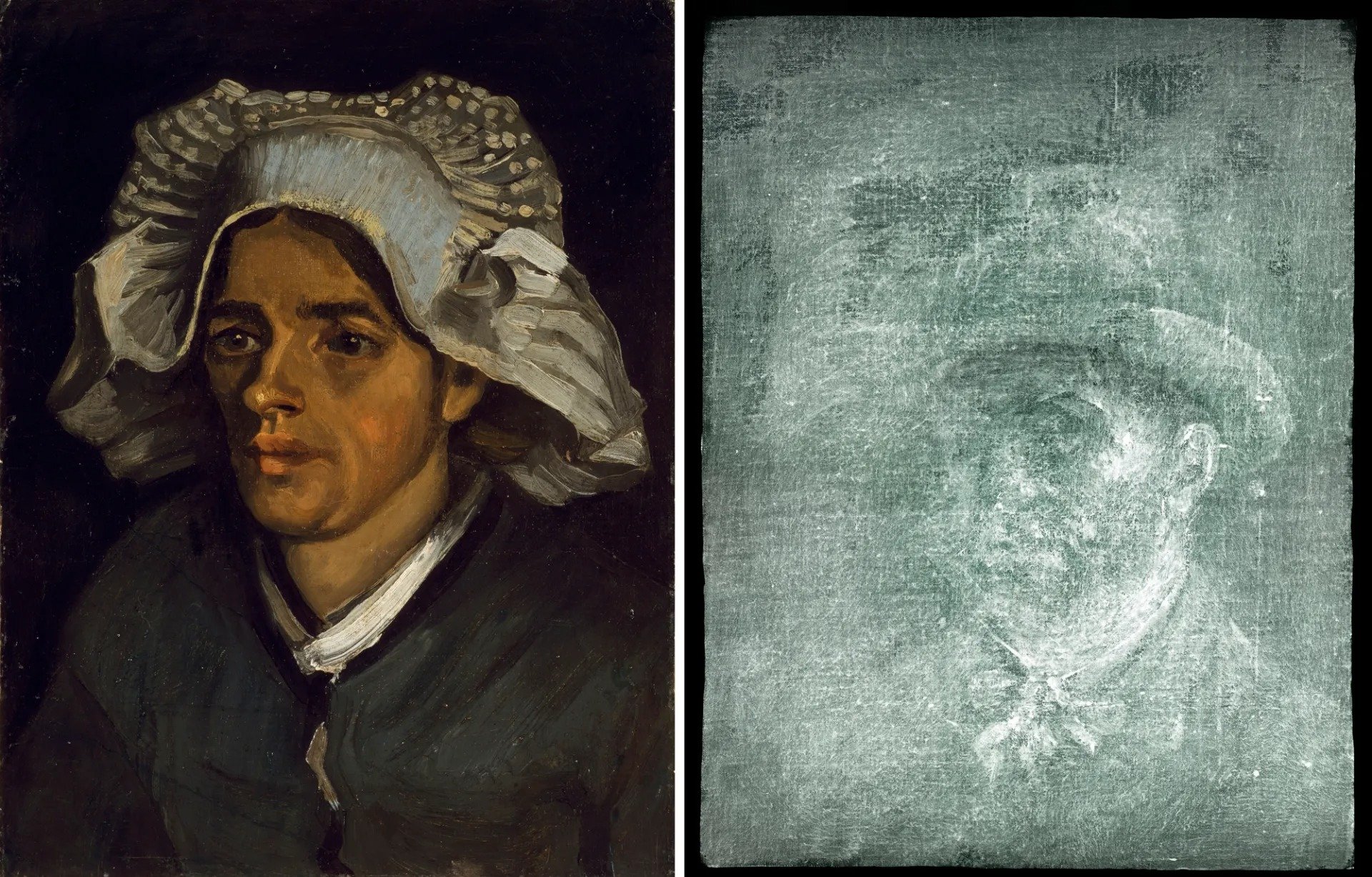
Art experts at the National Galleries of Scotland in Edinburgh made an exciting discovery while preparing for an upcoming exhibition. The reverse side of Vincent van Gogh's 1885 painting, Head of a Peasant Woman, features a portrait of the famed artist.
The mysterious image is covered by layers of glue and cardboard. It was revealed during a routine X-ray of the painting. Gallery officials announced the exciting find on July 14, 2022. They suspect the materials may have been added in the early 20th century to protect the artwork prior to an exhibition.
"Moments like this are incredibly rare," said Dr. Frances Fowle, the gallery's senior curator of French art. "We have discovered an unknown work by Vincent van Gogh, one of the most important and popular artists in the world."

The recently-discovered image is believed to be part of a series of experimental self-portraits van Gogh painted while living in Paris with his brother, Theo, from 1886 to 1888. Since the artist could not afford to hire models, he frequently honed his portrait skills by painting his own face.
Gallery officials are trying to determine if there is a way to remove the old glue and cardboard without damaging the original painting. Meanwhile, visitors to the upcoming "A Taste For Impressionism: Modern French Art From Millet to Matisse" exhibition will be able to view the X-ray image of the self-portrait through a specially-crafted lightbox.
This is not the first time van Gogh has delighted the world with a self-portrait hidden behind one of his masterpieces. The Van Gogh Museum in Amsterdam is home to five similar double-sided paintings. The artist often reused canvases to save money. But, instead of painting over earlier works, he used the reverse side of the canvas.

Head of a Peasant Woman is part of a series of paintings van Gogh created between 1883 and 1885. It showcases the working class of Nuenun, a small rural community in the southern Netherlands. The peasant woman represented in the painting is Gordina de Groot, a local farm worker. She also appeared in one of van Gogh's most famous masterpieces, The Potato Eaters.
Resources: Nationalgalleries.org, LiveScience.com, NPR.org
